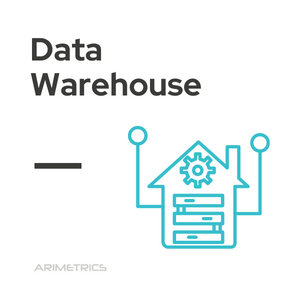Definition:
Data Warehouse is a collection of data organized for analysis and access to information. It is designed to allow users to analyze data from multiple perspectives, regardless of how it was originally collected and stored.
Data warehouses are built using a variety of tools and technologies, with the goal of bringing together data from different application systems in one place, for common use. This allows users to collect and analyze information from across the enterprise, thus obtaining unique answers that aid in decision making.
What are the structures of a Data Warehouse
Data warehouses are typically composed of several basic entities, such as the main database, the information systems that feed the database, and the analytical tools.
The main database consists of multiple tables containing the collected data. These tables are organized according to a relational structure, making it easy to extract and store the data.
Information systems feed the database, providing the data that will be used to create the data warehouse. This can include a variety of sources, such as application databases, flat files, and ERPs.
Analytics tools are specialized software designed to help users extract useful information. These tools offer a wide variety of functions, such as creating graphs and tables to visualize data, statistical analysis, and preparing reports.
What is the main objective of a Data Warehouse
The main objective of a Data Warehouse is to provide a single centralized source to store, manage and analyze information, which is easily accessible to the personnel of the organization. This gives users the ability to better understand your business and optimize your processes to maintain a competitive advantage.
Differences between Data Warehouse and Big Data
One of the main differences between a Data Warehouse and Big Data is their approach. While the former focuses on the organization and analysis of large volumes of information, Big Data is about the collection and analysis of large volumes of unstructured data.
In terms of storage, a data warehouse is a relational database that is used to store large amounts of information. On the other hand, Big Data is stored in a variety of different systems, such as Hadoop clusters and NoSQL databases.
In addition, the tools used to analyze the data are also different. A data warehouse is analyzed with specific statistical tools, while Big Data also uses advanced analysis tools such as machine learning and natural language processing.
What are the benefits of Data Warehousing in the cloud?
Data warehousing in the cloud offers many benefits to users looking to organize and analyze large amounts of data.
First of all, cloud storage means that users can access their data from anywhere in the world with an internet connection. Second, storing and processing large volumes of data in the cloud allows users to reduce the cost and complexity of managing a data warehouse. Finally, storing data in the cloud also offers greater scalability, allowing users to quickly add new data sources or change data warehouse settings without the need for large investments.
In conclusion, a Data Warehouse is used to store and analyze large volumes of structured information, while Big Data is used to collect and process large amounts of unstructured data. Each approach offers a unique set of benefits for users, and the choice largely depends on their specific needs.
